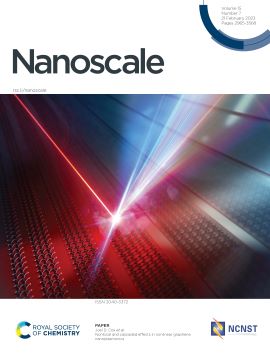
New study published in Nanoscale
Synergetic interactions between different plasmon resonances in graphene heterostructures trigger nonlinear optical phenomena that enable spectral control of light by light on the nanoscale.
Title of publication: 'Nonlocal and cascaded effects in nonlinear graphene nanoplasmonics'
Nonlinear optical phenomena enable the control of light by light required for diverse applications in optics and photonics. However, the inherently weak nonlinear optical response of conventional materials typically necessitates the propagation of high-power laser fields in bulk crystals to accumulate significant effects, which becomes problematic for nanostructured materials with reduced light-matter interaction volumes.
The extreme light focusing ability of plasmon polaritons in graphene has emerged as a promising mechanism to trigger nonlinear light-matter interactions on the nanoscale. In particular, harmonic generation, where light interacts with matter to act back on itself and produce light at an integer multiple of the original frequency, is a nonlinear optical process that is predicted to occur with high efficiency due to localized plasmon resonances in graphene nanostructures.
In a new study published in Nanoscale, POLIMA researchers Theis P. Rasmussen and Joel D. Cox led a collaboration with colleagues from The Institute of Photonic Sciences (ICFO) in Castelldefels, Spain to reveal the intense optical nonlinearity that emerges from synergetic interactions between different plasmon resonances in graphene heterostructures. Their work, featured on the front cover of Nanoscale, predicts that plasmon-assisted harmonic generation in graphene nanoribbon ensembles can be dramatically enhanced by the nonlocal optical response associated with large electromagnetic field gradients in closely-spaced ribbons with optimal size and position. The intense nonlinear optical response can be actively controlled by electrically tuning each structure independently.


